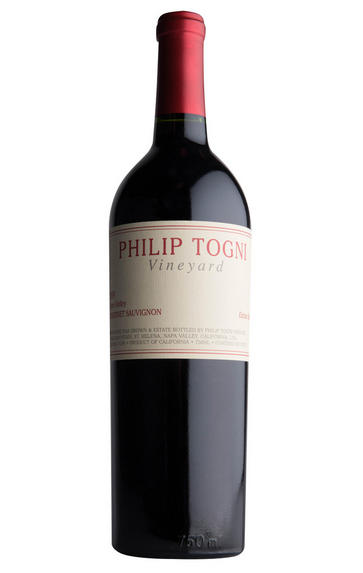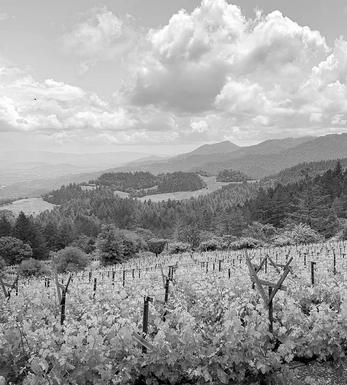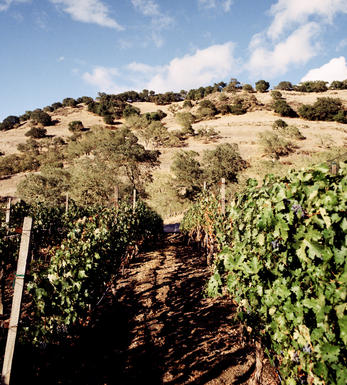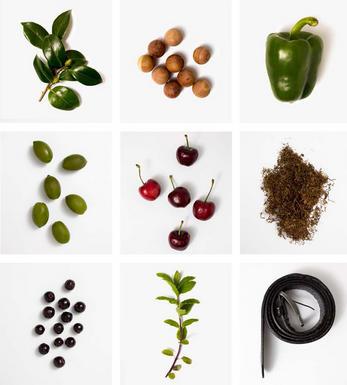
2018 Philip Togni Vineyard, Cabernet Sauvignon, Napa Valley, California, USA

Critics reviews
The 2018 Cabernet Sauvignon Estate is sensual and polished. Bright acids lend energy as this super-finessed Cabernet opens in the glass. Crushed red berry fruit, cedar, rose petal and mint all open with a bit of coaxing. The 2018 is going to need a number of years to be at its very best.
It is elegant, nuanced and simply impeccable, but also a bit reticent at this stage. Readers who are familiar with these wines know they need time to come into their own. If that is not possible, I suggest opening it well in advance, even a day or two.
Drink 2027 - 2047
Antonio Galloni, Vinous.com (January 2021)
Medium to deep garnet-purple colored, the 2018 Cabernet Sauvignon Estate offers up intense notes of crushed black currants, fresh blackberries and ripe red plums with hints of pencil lead, black raspberries, underbrush and unsmoked cigars plus a touch of tapenade.
Medium to full-bodied, the palate delivers bold, crunchy black and red berry layers with a lively backbone and firm, grainy tannins, finishing long and energetic. 1,470 cases were made.
Drink 2023 - 2049
Lisa Perrotti-Brown, Wine Advocate (January 2021)
About this WINE

Philip Togni Vineyard
Founded by Philip Togni and his wife Birgitta in the 1980s, the estate has gained a reputation for producing exceptional Bordeaux-style wines often characterised by their elegance, balance, and ageing potential.
With a background in vineyard management and winemaking, Philip Togni established his eponymous winery intending to craft wines that reflect the unique terroir of his Spring Mountain estate in California. He embraced a traditional and minimal intervention approach to winemaking, focusing on the expression of the vineyard and the varietals he cultivated.
The vineyard is in an elevated and rugged area within the Napa Valley. The elevation and cooler climate contribute to longer growing seasons and slower ripening, leading to wines with depth and complexity. The wines are predominantly made from Cabernet Sauvignon and other Bordeaux varieties such as Merlot, Cabernet Franc, and Petit Verdot, exhibiting a more old-world style.
Togni’s winemaking philosophy focuses on crafting wines meant to age gracefully. He employs traditional techniques such as long ageing in oak barrels and minimal manipulation during winemaking. The wines are well-structured, with firm tannins and balanced fruit and acidity.

Napa Valley
North Coast's Napa Valley is California's most famous viticultural area (AVA), claiming some of the most expensive agricultural land in the world and producing wines of ‘cult’ status.
Its 16,000 ha of vines lie over a strip (40 miles long-5 miles wide) of diverse soils (clay, gravely, volcanic), with its northernmost end on the side of Mountain Helena and its foot in San Francisco Bay. The valley is framed by two mountains ranges Vaca (to the north) and Mayacamas (to the south), yet the main climatic influence is the cool wind and fog that is sucked in from San Pablo Bay during the afternoon, allowing grapes to ripen slowly and evenly.
The area enjoys a variety of unique microclimates, as temperatures can vary dramatically as much as 15 degrees, from the north to the south end of the valley. These differences have led to the creation of several sub-AVAs (14 in total) including:
Atlas Peak, Chiles Valley District, Diamond Mountain District, Howell Mountain, Los Carneros, Mt. Veeder, Oakville, Rutherford, St. Helena, Spring Mountain District, Stags Leap District, Yountville, Wild Horse Valley and Oak Knoll District. The Calistoga AVA is still pending approval.
Both the “Napa Valley” designation and the sub-AVA name must appear on the wine label simultaneously, with the exception of wines from the Carneros AVA, which is shared between the Napa Valley and the Sonoma County.
Cabernet Sauvignon is the undisputed king of Napa grapes, occupying over 45% of the vineyard acreage, followed by (predominantly) Chardonnay, Sauvignon Blanc, Chenin Blanc, Riesling, Zinfandel, Merlot, Cab. Franc and to a lesser extent Petite Sirah, Sangiovese, Barbera, Dolcetto.
Recommended Producers
Frog's Leap, Dominus, David Ramey, Viader, Stag's Leap Cellars, Paras Vineyards, Heitz.

Cabernet Sauvignon Blend
Cabernet Sauvignon lends itself particularly well in blends with Merlot. This is actually the archetypal Bordeaux blend, though in different proportions in the sub-regions and sometimes topped up with Cabernet Franc, Malbec, and Petit Verdot.
In the Médoc and Graves the percentage of Cabernet Sauvignon in the blend can range from 95% (Mouton-Rothschild) to as low as 40%. It is particularly suited to the dry, warm, free- draining, gravel-rich soils and is responsible for the redolent cassis characteristics as well as the depth of colour, tannic structure and pronounced acidity of Médoc wines. However 100% Cabernet Sauvignon wines can be slightly hollow-tasting in the middle palate and Merlot with its generous, fleshy fruit flavours acts as a perfect foil by filling in this cavity.
In St-Emilion and Pomerol, the blends are Merlot dominated as Cabernet Sauvignon can struggle to ripen there - when it is included, it adds structure and body to the wine. Sassicaia is the most famous Bordeaux blend in Italy and has spawned many imitations, whereby the blend is now firmly established in the New World and particularly in California and Australia.


Buying options
Add to wishlist
Description
Already within its youth, this wine is beginning to fall beautifully into place. There’s a wonderful intensity of ripe red plum, fresh black current and raspberries on the nose. All the aromas are very high quality and well-integrated into one another, which has me thinking that this has to be one of the finest 2018 Napas I’ve had the pleasure of tasting.
The Estate Cabernet is already starting to show that this wine in the coming years will be epic. On the palate, it’s medium to full-bodied with great intensity (but delicate by traditional Napa standards) while being smooth textured with the high-quality red fruits transferring graciously onto the palate. Simply delicious!
For any enthusiast of Cabernet Sauvignon, no matter what region your preference takes, this a wine I say with great confidence you will love.
Drink 2025 - 2050
Cameron Gates, Account Manager, Berry Bros. & Rudd (August 2023)
wine at a glance
Delivery and quality guarantee